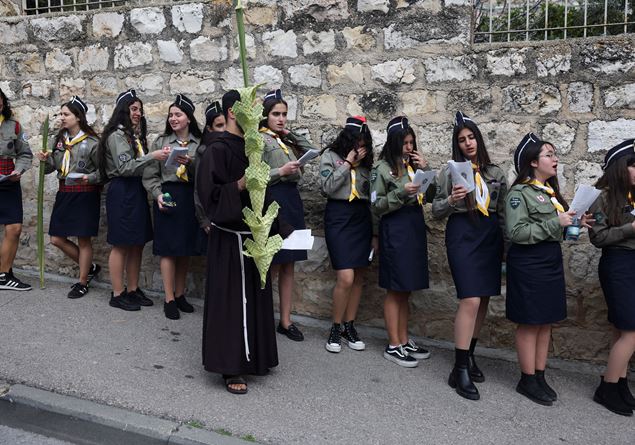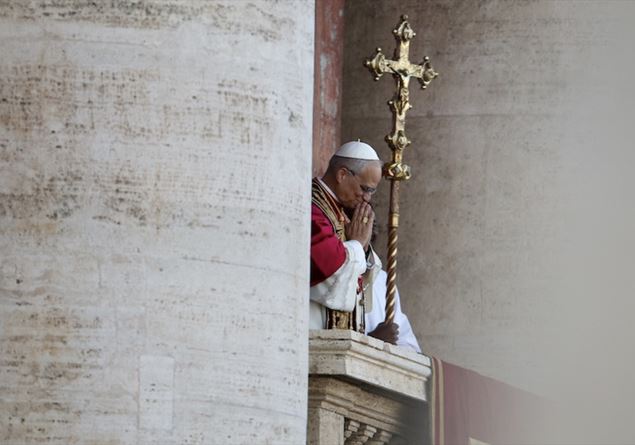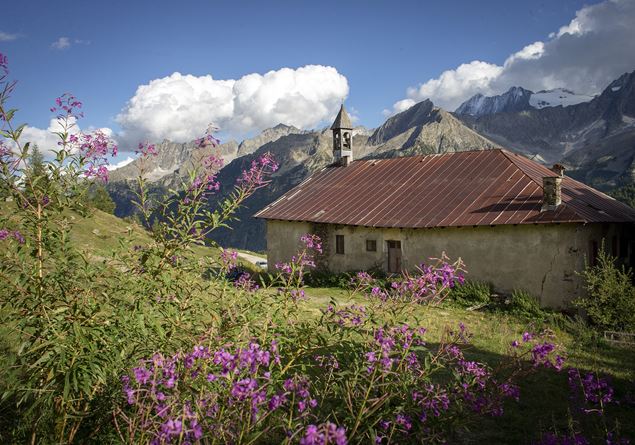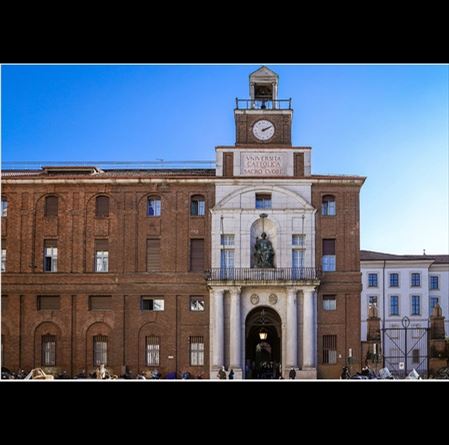A moment of the procession for the 2016 Palm Sunday in St. Peter’s Square (Reuters)
During the celebration of the Palm Sunday, In the hands of the Pope and Cardinals, we see artistic intertwined palm trees. They refer to the tradition of the olive tree and the palm as a symbol of passion, whose historical roots you can read at this link, and have a long and suggestive history of artisan and popular tradition, which is the evolution of the ancient use of many Mediterranean peoples (in Calabria, in Sicily, in Sardinia, Libya) to use dried palm leaves and intertwined to produce objects useful for daily life.
The intertwined palm trees that we always see in the Vatican on Sunday precedes Easter They actually come from Northern Italy and in particular from the Bordighera and Sanremo area, home to the northernmost palm grove in Europe.
The donation and transport of “Parmureli” – So the compositions of intertwined palma are called in Liguria – they have been able to perpetuate themselves in recent years thanks to the contribution and synergy of various bodies including the Study and Research Center for Palm, the Social Cooperative “Il Cammino”, the Foundation for the goods and artistic activities of the Church, the Municipalities of Bordighera and Sanremo. And ain 2022 the tradition continues ensured by the organization of the Famijia Sanremasca Association established in 1957 with the aim of preserving and history, traditions, art and culture of Sanremo and its area, which promoted the collection, which was attended by the Municipality and citizens and citizensand the expedition of the “Parmureli”, not on board a ship as original but of a minivan van.
The tradition of bringing to the gift to Pope Rami di Palma has ancient roots between history and legend. He dates back to the time of Pope Sixtus V and in particular to 1586 when the Pope wanted to place the Egyptian obelisk transported in Rome by Caligola in San Pietro in 39 BC in Rome
It reconnects it to an episode that happened during the positioning of the obelisk in St. Peter’s Square. It is said that the Pope had imposed the silence under penalty of death – at the time in force in all the Papal States included – during the positioning of the obelisk, perhaps to prevent the noise of the crowd from overlooking the coordination of difficult operations, entrusted to the architect Domenico Fontana. At a certain point, however, in a moment of particular complexity, a cry in Ligurian dialect would have been raised: “Aiga ae corde”, water on the ropes. It was the voice of Captain Benedetto Bresca, Wolf of the Sanremese sea, who intended to be of peaks and realized that the dry strings could have broken. The indication of wetting the ropes contributed to the success of the operation.
Captain Bresca, far from being punished for having disobeyed, was indeed honored with his descendants of the privilege of paying homage to the Pope of the palm trees intended for the celebrations of the Easter period. By virtue of his role as an official supplier, during transport along the Tiber, the boat of the Palme di Brasca could also raise papal flag and thus obtain precedence on other boats.
For centuries, the Ligurian intake had limited itself to the supply of the Palma of Phoenix Dattilifera Palma, kept white thanks to a liging process of the tuft that serves to preserve the light color of the leaveswhite for Catholic Easter, light green for the Jewish one. While the Camaldolese nuns provided for in Rome. For about twenty years now, however, from Liguria they have arrived in St. Peter’s Square Parmureli already intertwined in companies in the area. In the last few years, the one of the Phoenix Canariensis, softer and easier and easier to intertwine, has been added to the use of the variety of Phoenix Dactilifera. But on the continuation of the tradition they now weigh some factors that endanger the palm treesamong these, in addition to the economic crisis always lurking, the export of adult palm trees that since the nineteenth century “empties” the Ligurian heritage, but above all in recent times the disease caused by the red awl, a parasite of Asian origin which, arrived in Italy in the early 2000s, was putting Italian palm trees in serious danger.
If it is true that Ligurian Parmureli who adorn St. Peter’s Square on Palm Sunday, it is true that the tradition of the attack is not only coastal, on the contrary, it is ancient and frequent in southern Italy. The detail is very felt in Sardinia where “Sa Pramma Pintada”, the woven palmwhich has common origin with the sacred objects that was born from the work of medieval convents, found impulse in the period of counter -reform as the ethnologist writes Maria Nevina Dore That the theme dedicated the monograph Sa Pramma Pintada: the culture of the palm in Sardinia, written with four hands with Ignazio Orrù in 2015 (Editrice S’alvure, Oristano): “In 1570 the Roman Missal set the” Station “for Palm Sunday”, he wrote in a small essay published on Phoenix Project France Italy, “with the granting of holding Palma and olive branches in his hand, during the procession and Holy Mass. Precisely for the procession the custom was born to embellish the palm trees “prammas” intertwining the leaves. Thus was born the practice of attacking palm trees for religious use that has left real popular works of art, called “Prammas Pintadas”.
The artisan ability is such that the most varied and complex forms come out of the leaves even if the most represented figures have to do with the rites of passion and holy week: the fish (symbol of Jesus Salvatore of man), the cross, the pigno sign of abundance (of the grace) that symbolizes the tunic of Jesus that the soldiers arose at the foot of the cross and the spiga that alludes to the broken bread of the last dinner.
As stated in the card entitled The religious intertwining of Mediterranean Nest Museum (MIM) of Castelsardo (Sassari)around the palm, popular beliefs are intertwined that go beyond the liturgical accompaniment of the celebrations of the Easter period: «In the Sardinian tradition, the twigs of Palma and Olivetti blessed also acquire the virtue of defending the person and things from the pitfalls of the devil. Hence the practice of placing the intertwined palm in a predestined place of the house; The tradition of giving the intertwined artifact as a good omen of peace or against physical and inner evils and the Poor positioning of the Palma braid to protect the Fassonis (Ancient fishing boats built with cane ed.) ».
It is no coincidence that in order not to violate its sacredness, from Liguria to Sardinia, generally it is prevented that the intertwined palm trees as Benedette are simply thrown: tradition has it that they are burned. And in some places they become the ashes that are imposed on the faithful at the beginning of Lent of the following year.










